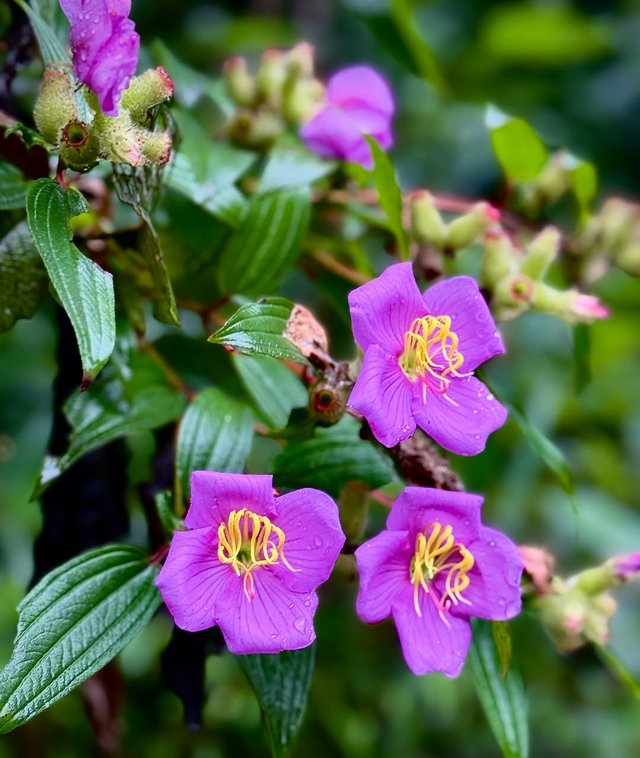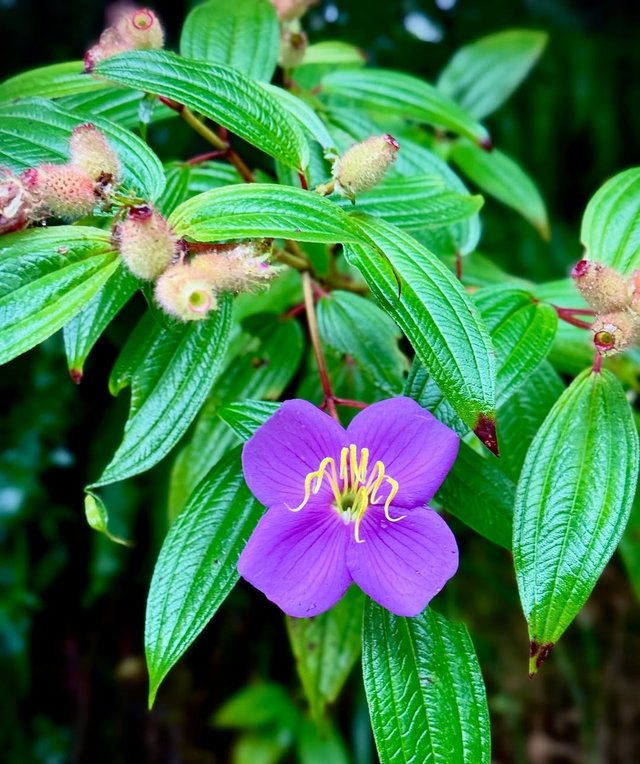Beautiful Melastoma Flower
Melastoma: A Vibrant Tropical Shrub with Ecological and Cultural Importance
Melastoma is a striking genus of flowering plants belonging to the family Melastomataceae, widely admired for its vibrant purple, pink, or magenta blooms. Native to tropical and subtropical Asia, Australasia, and some Pacific islands, Melastoma species are commonly seen in open woodlands, grasslands, and disturbed areas, thriving even in poor soils. The most well-known species, Melastoma malabathricum, often called Indian rhododendron, Singapore rhododendron, or Senduduk, is particularly common in Southeast Asia.
Botanical Features
Growth Habit: Melastoma plants are usually evergreen shrubs or small trees reaching heights of 1–5 meters. They are hardy and can adapt to challenging conditions, which makes them pioneers in colonizing degraded lands.
Leaves: The leaves are simple, opposite, and covered with fine hairs. They are usually lance-shaped with three prominent longitudinal veins—a characteristic feature of Melastomataceae.
Flowers: The showy five-petaled flowers are typically purple to deep magenta, with prominent yellow stamens. These blooms are short-lived, often lasting only a day, but the plant produces flowers in succession, ensuring a long display of color.
Fruits: The fruit is a small berry that splits open to reveal a fleshy pulp filled with numerous tiny seeds. These fruits are an important food source for birds and other wildlife.
Habitat and Distribution
Melastoma species are distributed across tropical Asia, including Malaysia, Indonesia, India, the Philippines, Bangladesh, and northern Australia. They are commonly found in grasslands, roadsides, riverbanks, and forest edges. Their ability to grow in nutrient-poor, acidic soils makes them valuable in rehabilitating degraded ecosystems.
Ecological Role
Melastoma plants play a crucial role in their ecosystems:
Soil Stabilization: Their extensive root systems help prevent erosion on slopes and disturbed sites.
Wildlife Support: Flowers attract bees, butterflies, and other pollinators, while fruits provide food for birds and small mammals, aiding seed dispersal.
Pioneer Species: By colonizing poor soils, Melastoma helps pave the way for other plant species to establish, gradually restoring biodiversity.
Cultural and Medicinal Uses
Traditional Medicine: In many Southeast Asian cultures, parts of the Melastoma plant have been used in traditional medicine. Leaves and roots are sometimes used to treat wounds, diarrhea, or inflammation due to their believed antimicrobial and anti-inflammatory properties.
Thanks For Reading
Device Information
| Device | cannon eos 700D |
|---|---|
| Lens | 55-250 zoom leans |
| Location | Bangladesh |




